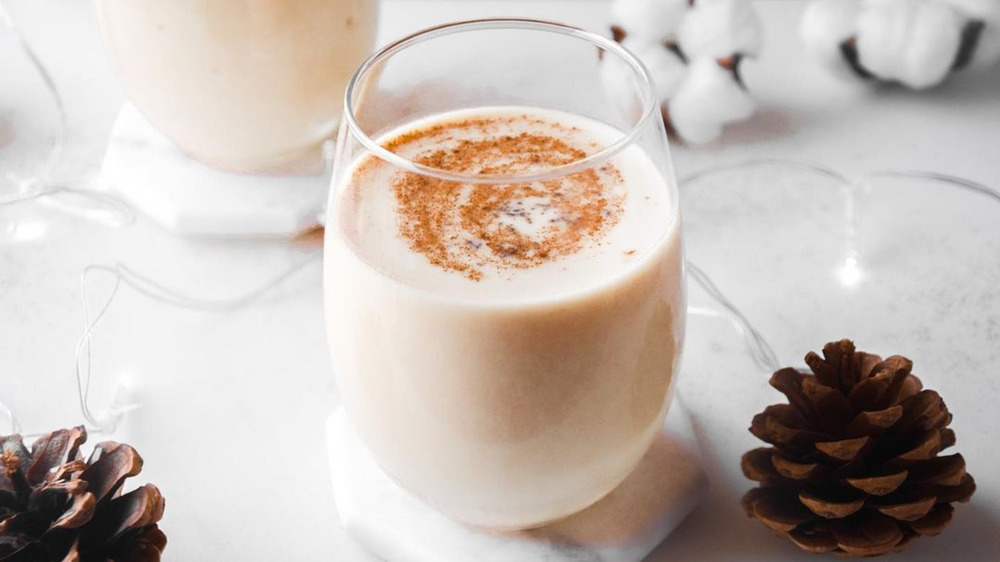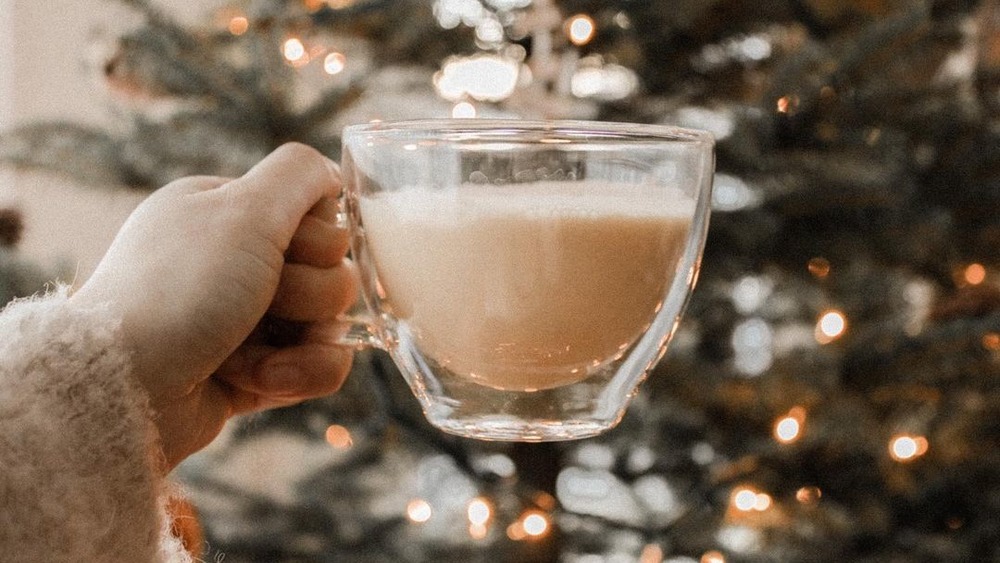The Secret Trick To Making The Best Eggnog
The base recipe for eggnog is simple: eggs, milk and/or cream, and sugar (via Food Network). From there, it gets complicated fast. Which spices should you add? Alton Brown's recipe for the Food Network calls only for nutmeg (freshly ground, mind you, not pre-ground). Jamie Oliver adds nutmeg, cinnamon, and vanilla beans. Then there's the liquor, which is a mandatory ingredient for a lot of eggnog drinkers. You can find eggnog recipes that include rum, bourbon, or cognac. Martha Stewart's signature nog contains all three. Someone at Wired magazine trusted a bartender in Portland, Oregon enough to publish his recipe, which calls for tequila and sherry. You might as well pour a can of PBR in there, if you want. Your alcohol choice is going to be a matter of personal taste more than anything else.
The secret trick to making eggnog is found in the process, which is even more complicated than choosing the spices and liquor. If you're not careful, things can go very wrong while making eggnog. But you don't want to resort to getting the store-bought stuff, either. So stay alert — no sampling the liquor ahead of time — and follow these tips for the best homemade eggnog.
For the best consistency and flavor, cook your eggnog
While flavor almost by definition is a matter of personal taste, maybe we can agree we want our eggnog to be as silky smooth as possible, with no hint of lumps. Alton Brown, at least once, poured a canister of 283-degree-below-zero liquid nitrogen into his eggnog, to whip up a light and airy, soft-serve ice cream version of the holiday beverage. Nobody's going to go that far, though. Brown was just showing off for NPR.
Brown's ideal eggnog texture — silky on the bottom, airy on the top — doesn't come from liquid nitrogen but rather from the whipped egg whites that get added to the nog at the end. That's standard practice in the eggnog-making process. To enhance the flavor and to add a "badass, cookie dough, cake batter kind of consistency," we'll depart from Brown's raw nog and recommend cooking it (via Phoenix New Times). This is the safer way to go, in any case. Raw eggs are especially risky for people who are elderly, pregnant, or immune-compromised (via Martha Stewart).
When it comes to cooking your eggnog, the American Egg Board and Phoenix New Times recommend "low and slow." Use a thick pan, stir constantly and don't go one degree above 160. You might spend 45 minutes or an hour stirring, but it'll be worth it for that silky nog.

